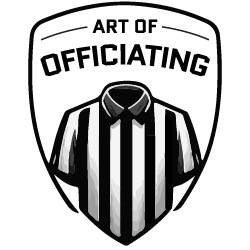In education, some teachers believe in giving students a “clean slate” each year—no warnings, no passed-along reputations. That might be appropriate in the classroom, but on the football field, it’s not always the best philosophy. As officials, we owe it to each other, and to the game, to pass along important information from week to week.
Too often, crews finish a Friday night game, pack up, and never share what they learned about that team. The result? The next crew comes in blind, repeating the same mistakes or getting caught off guard by the same behaviors.
What We Should Be Sharing
Formations and Tendencies: Some teams employ uncommon formations or shifts, resulting in atypical eligible receiver locations. Passing that along helps the next crew prepare for unique plays.
Unusual or Trick Plays: If a team has run a fake punt, swinging-gate formation, or halfback pass, it’s fair game to let the next crew know. They still need to officiate it fairly, but at least they won’t be taken by surprise.
Player Behavior: Every association has a handful of “repeat offenders”—players who block illegally, target opponents, or chirp constantly. Naming numbers to watch is not about bias; it’s about safety and awareness.
Sideline Issues: Some coaching staffs are great partners; others constantly test boundaries. Letting the next crew know about sideline behavior can help them prepare their approach.
Why It Matters
Safety: A repeat offender on personal fouls or unsportsmanlike behavior should be on the radar of every crew that works his games.
Credibility: Crews look more professional when they’re ready for the tricks and tendencies that have already been shown.
Consistency: Coaches deserve a consistent experience from week to week. If one crew tolerates a formation and the next penalizes it, the association loses credibility.
How to Do It
This is where most associations fall short. Everyone may agree we should share information, but few have systems to make it happen. Here are some ideas:
Crew-to-Crew Communication
The easiest system is to figure out which crew has the team’s next game and call or send an email to the white hat to pass along relevant observations and lessons learned.
Shared Digital Platform
A Google Doc or Slack channel where crews can drop quick notes after games.
Example: “#72 was flagged for multiple illegal use of hands fouls (hands to the face while rushing the QB. Team X ran a double-pass twice. The coaches tend to stand in the restricted area; make sure you clear it before every snap.”
Pregame Notes
Association leadership can provide a short “points of emphasis” before each week’s slate of games, based on what prior crews have reported.
Football officiating is not about giving teams a “clean slate” in the sense of ignoring lessons already learned. It’s about fairness, safety, and consistency. Sharing corporate knowledge across crews enables us to serve the game better.
Quiz
Read the quiz stem and then choose the best answer. (Choose all that apply.)
In the first half, the home team was flagged three times for having coaches in the restricted area while the ball was live (without contact). The home team has the ball for the first series of the second half. On 3/10 from the A-35, A35 gains 11 yards to the A-46. During the run, a home team assistant is flagged when the line judge runs into him in the restricted area.
- Penalize 15 yards from the previous spot, 3/25 from the A-20
- Penalize 15 yards from the end of the run, 3/14 from the A-31
- Penalize 15 yards from the end of the run, 1/10 from the A-31
- The assistant coach is ejected
- The head coach is ejected
Review Rules 8-2-4, 9-4-8 and 9-8-3
